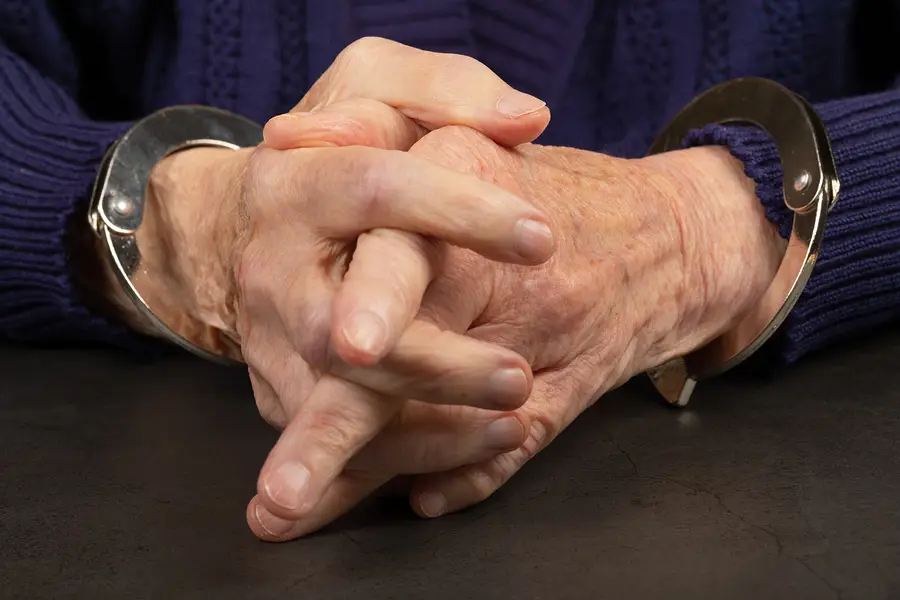
The Challenges of an Older Prison Population
In recent decades, the aging prison population, typically considered people aged 55 or older, has grown significantly—more than tripling in size from 3% in 1993 to 10% in 2013. This growth presents material challenges for state and federal correctional administrators and raises vital policy and practice questions about the care and custody of older incarcerated people.
Caring for an aging population is costly, and most prisons are under-resourced—lacking the staff and funding necessary to meet the increased medical and health care needs of this population, as well as requisite housing accommodations for those with limited mobility. Additionally, through a phenomenon known as “accelerated aging,” incarcerated individuals exhibit the physiological characteristics of people in the community who are, on average, 10 years older. Research on the health conditions of people in prison also finds that older incarcerated people have more chronic health issues than their counterparts outside prison, as well as younger incarcerated persons.
Furthermore, incarcerating older people is expensive and may in fact do little to improve public safety. Behavioral research consistently demonstrates that criminal activity decreases significantly as people age and that older adults are significantly less likely to recidivate compared to younger incarcerated people. Because of this, as the nation’s prison population ages, our prisons are increasingly filled with people who pose a dramatically lower risk to public safety.
The Landscape of Older Incarcerated Individuals in the United States
Although a sizable proportion of older adults incarcerated for violent crimes will likely never be released, many middle-aged and older adult prison residents will return to their communities. Data from a sample of 34 states indicate that about 5% (N=22,456) of people aged 55 or older were released between 2012 and 2017. The proportion of incarcerated adults aged 40 or older—although relatively small compared to the total prison population across these states—also grew from 32% in 2005 to 35% in 2012. These figures suggest that policymakers and correctional leaders need to formulate and implement policies and practices proactively that address the needs of this aging population during incarceration and as they prepare for reentry. The demands of caring for the aging population during and after incarceration are increasing, and policymakers should address these issues now rather than allowing them to snowball into avoidable crises in the not-too-distant future.
Barriers Faced by Older Adults Reintegrating into Society
Much like their younger counterparts, older formerly incarcerated people face several barriers to reintegrating successfully into their communities. These include securing safe and affordable housing, obtaining meaningful employment, reconnecting with family, and navigating unfamiliar technology. For the elder reentry population, these challenges are magnified.
Finding safe and affordable housing can be impacted by a host of factors, including shrinking family and friend networks; untreated mental illness; substance use issues; and macro housing market supply, cost of living, and local cultural norms (such as housing ordinances) of acceptable housing conditions. In some cases, nursing homes and other types of individual and congregate housing are hesitant to accept people with criminal records for fear of lawsuits, public relations and reputational issues, or potential victimization of other residents, so creating housing that is supportive of older people leaving prison is of paramount importance. As a result of these and other issues, older formerly incarcerated adults can be at substantial risk for experiencing homelessness post-reentry.
Older adults also face many barriers around employment when they leave prison. Viable job opportunities can be restricted by age; limited educational attainment; a lack of marketable job skills; and, for those who have been incarcerated for several years, limited technology literacy.
Older incarcerated individuals’ ability to navigate these issues effectively is largely contingent on criminal history, mental and physical health status, and employment history prior to incarceration. With respect to health care, older adult returning citizens face numerous legal and regulatory barriers to eligibility, as well as operational and logistical barriers to enrollment among those eligible for coverage. These include challenges around documentation of disability needed for Supplemental Security Income/Social Security Disability Insurance (SSDI); limited pathways to eligibility for non-disabled individuals; lack of sufficient qualifying work history for Medicare Part A and SSDI; inability to meet enrollment deadlines while incarcerated; limited communication among criminal justice, public benefits, and health care systems; and challenges presented by unstable housing, lack of transportation, functional and cognitive impairment, low literacy, and distrust of institutions and public benefits. Moreover, because of accelerated aging, many returning citizens meet the correctional definition of “elder” and display the advanced aging signs of someone who is much older, yet they do not qualify for Medicare because they do not meet the biological age criteria.
Recommendations for Older Reentry Assistance
Like younger prison residents, older people who return to the community after incarceration face myriad obstacles, including securing housing, obtaining employment, and accessing health care in the community. These issues are further exacerbated by their age, warranting special attention from policymakers. As evident in official documentation of the increase in the percentage of older adults in the prison and release populations, the problem of the "aging prison population" does not appear to be disappearing on its own. A significant number of presently incarcerated people in middle and older age will inevitably return to their communities in the coming years and need to navigate the realities of a world that looks quite different from before they were incarcerated.
Moving forward, more research is needed to understand the state of available interventions and reentry preparation for elder incarcerated people, including the range of compassionate release policies and practices used by state Departments of Corrections, elder release preparation practices and procedures, elder reentry programs that span the facility and the community, and geriatric parole practices.


